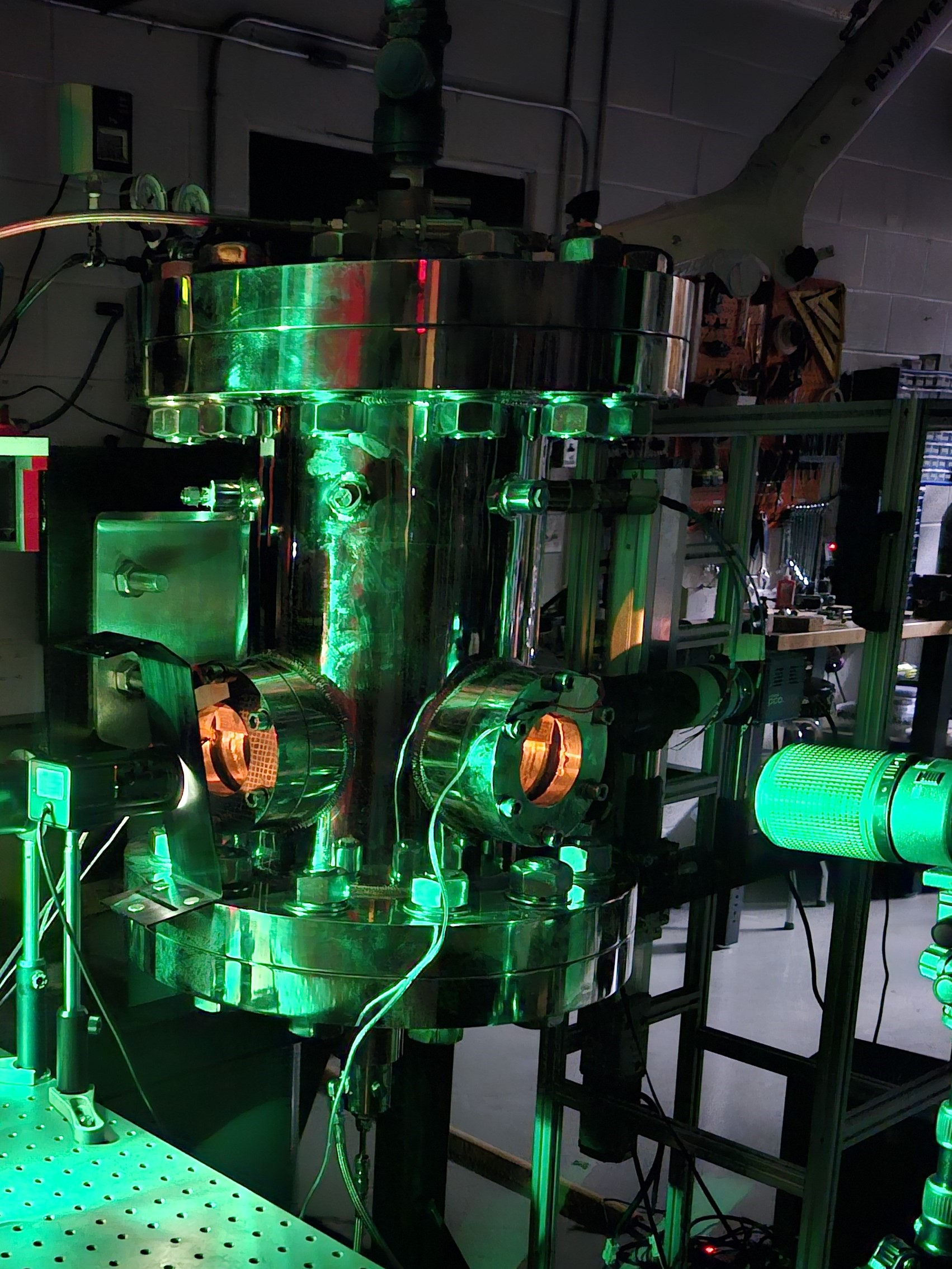Research
The Propulsion and Clean Energy Group specializes in experimental studies of multiphase flows and energy systems. We utilize a range of optical techniques, including particle image velocimetry, laser light extinction, mie scattering, and spectral emission. In addition, we have a range of capabilities that allow us to conduct high-quality research. These include basic machining, rapid prototyping using 3D printers, flow control using digital mass flow controllers, temperature control using PID controllers, flow calibration, and motion control using stepper motors and encoders.
Soot Formation at Atmospheric and High Pressure
Combustion-generated soot aerosol, also known as "particulate matter" in the automotive industry and "black carbon" in atmospheric sciences, is abundant in the diffusion flames of hydrocarbon and alternative fuels. Soot emissions have many detrimental effects, leading to increased public awareness and more stringent pollutant emission regulations.
Atmospheric aerosol is estimated to cause 4.5% of all deaths worldwide and contributes to human-made climate change. Soot aerosol is recognized as the third-largest contributor to human-made climate change by the Intergovernmental Panel on Climate Change. Unlike CO2, however, atmospheric soot has a life span of only weeks, making soot emission control a viable short-term strategy to mitigate global warming. Controls on soot aerosol can produce immediate reductions in global warming and mitigate the ill effects of airborne soot on human health.
We study soot formation in the flames of traditional and bio-fuels using lab-scale burners. We employ thermophoretic sampling to collect soot aggregates from flames and optical diagnostics such as line-of-sight extinction (LOSA), spectral soot emission (SSE), and laser-induced incandescence (LII) to measure soot concentration.

Alternative Fuels
The design process of a gas turbine engine is relatively constrained due to safety and certification requirements. Furthermore, the superior power density and storage stability of liquid hydrocarbons make them the only viable choice of fuel in the future. As a result, the aviation industry is bound to move towards utilizing sustainably-sourced biofuels to reduce its carbon footprint. However, compared to the use of biofuels in energy generation and ground transportation, the adoption of biofuels for use in aircraft engines represents a unique challenge. Knowledge of soot formation processes in biofuels remains uncertain, and there is a need for comparison of the combustion characteristics of biofuels with those of traditional fuels before large-scale adoption of biofuels can take place. We study the combustion properties, such as flame stability, thermal stability, and emission propensity, of alternative fuels and compare their performance to those of traditional fuels. The desired outcome is to help develop fuel-flexible combustors.

Hybrid-Electric Propulsion
The Canadian Government pledged in April 2021 to reduce emissions by 40-45% compared to 2005 levels by 2030. Currently, aviation accounts for 2.4% of global carbon dioxide emissions, but its impact is becoming increasingly significant. In the past 20 years, total passenger traffic has more than tripled, and revenue passenger kilometers have grown by 6.7% in the last five years. Although fully electric aircraft is the ideal solution for eliminating aviation-based emissions, the current level of battery technology is inadequate. Batteries have approximately 50 times lower specific energy than liquid hydrocarbon fuels, making it challenging for them to generate the necessary energy, resulting in large and heavy batteries. Hybrid-electric systems can recharge their batteries using excess power from fuel-based energy sources.
Hybrid-electric propulsion systems use traditional fossil fuels and electric power to operate an aircraft with the aim of reducing fuel burn, emissions, and noise. As hybrid-electric propulsion is in its early stages of development and implementation in the aviation industry, its performance must be thoroughly evaluated and improved to ensure its success. We model and test on-ground hybrid electric systems to analyze their feasibility and enhance their performance.
